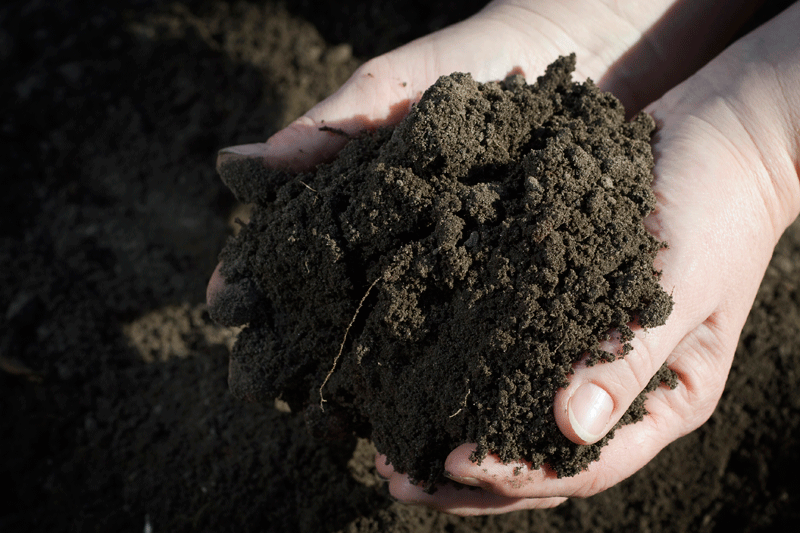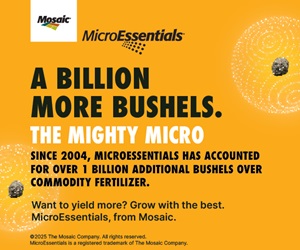Soil health
DO WE NEED A CHECKUP?
HAVE YOU FELT a need in recent years to do a little more tillage? Do you sometimes feel the market determines your crop rotation? The late 80’s and through the 90’s saw a lot of government programs support the growth of no-till, but in recent years it appears that more people have returned to plowing. There is always a good reason; the corn residue is so healthy it doesn’t break down well, a need to fill in some ruts, new tile installation, etc. Too often a little tillage leads to a lot and tillage is one of the fastest ways to deplete soil health.

Are your yields want you want them to be? What about in the stress years — the too dry, the too wet, etc.? After all the advances in genetics, some fields seem to be lagging; they have hit a yield plateau; something is missing! Are we missing something within the soil? Are our soils healthy and robust? As Ray Archuleta of the United States Department of Agriculture, Natural Resources Conservation Service (USDA – NRCS) says in many of his soil health talks when referring to a conventionally tilled field — “this soil is naked, hungry, thirsty, and running a fever”.
Soil health is more than fertility and pH. It goes way beyond what you can buy in a bag. It comes down to how you manage your soil — every year, year after year. There are a number of things you can do to improve or maintain your soil health — many you may already be doing. Some practices may have an immediate effect on crop growth and your bottom line; some may be more long term.
| What you can do | The earthworm’s view | And on farm – the bottom line… |
| Rotate, rotate, rotate! but rotate well — use a variety of crop types ie grasses — cereals, legumes — forages etc. — the goal is more than a wheat/soy or corn/soy rotation. | A varied rotation provides a variety of residues and root exudates for soil organisms and the maintenance of soil structure.
Rotation supports biodiversity, encouraging natural predators. |
Research suggests 10% yield improvement from crop rotation alone.
Count in the pest management benefits from reduced pest populations (reduced pesticide need) too — e.g. corn rootworm, SCN. |
| Reduce tillage, Leave residue, Use timely tillage – anything that leaves more residue on the soil surface. |
Less physical damage to soil organisms and their burrows and the overall structure of the soil.
The residue is usually distributed more shallowly in the soil, allowing more soil organisms access during the breakdown process. Helps to hold moisture. Residues shade the soil and maintain a more consistent soil temperature. |
Reduced fuel costs and labour. Reduced erosion/nutrient losses. More active soil = more efficient nutrient cycling. Less crusting/better soil structure = more efficient crop root systems, better nutrient access and more soil water available. Compaction can result in yield losses of 0-75% depending upon crop and year. Makes the crop more sensitive to weather extremes. The maximum economic rate of nitrogen is lower for corn in a no-till system. |
| Plant cover crops — crops either seeded or volunteer that are grown to add residues and roots to the soil. | Shades the soil and returns roots/ residues that help moderate temperature and moisture extremes.
Residues contain captured nutrients that are returned to the cycle rather than lost to leaching. Living root system growing and exuding materials that aid soil structure and support soil life. |
Protection from erosion losses (e.g. for wind erosion it is estimated that soil blown from a field may contain 10-12 times more organic matter and phosphates than the heavier particles left behind).
Production of nitrogen (legume cover crops). Efficient capture and recycling of nutrients. Better soil structure = strong root system. |
| Apply manure, compost and other organic materials | Source of foodstuff for organisms.
Aids in soil moisture retention. Supports greater diversity in the soil. |
Reduced fertilizer needs.
Provides micronutrients. Builds soil organic matter (the fastest way to build soil organic matter is to bring it in). Builds soil resilience. |
Enhancing soil health is key to optimizing the yield potential of newly available genetics and to more resilient crop production in the face of climate change. Farmers who utilize the practices in the table to the left consistently achieve higher yields no matter what the season brings.
Do you want to have a better handle on this? The FarmSmart agriculture conference is offering a full day, in-depth workshop called SoilSmart. The day will be lead by Ray Archuleta of USDA-NRCS in Greensboro, N.C. better known internationally as “The Soil Guy”. This workshop will focus on how to put soil health to work for you. Ray will spend the entire day at FarmSmart, along with U.S. and Ontario farmers who have been profitably putting soil health strategies into action. Through lecture, demonstration, workshops, farmer panels, and open Q&A sessions, Ray will get to the heart of what it takes to understand soil and the methods of enhancing soil health.
SoilSmart will be held at the Manulife Sportsplex at RIM Park in Waterloo at 2100 University Ave. E. on Friday, January 23, 2015. Keep up with the developing program at www.farmsmartconference.com. •


















